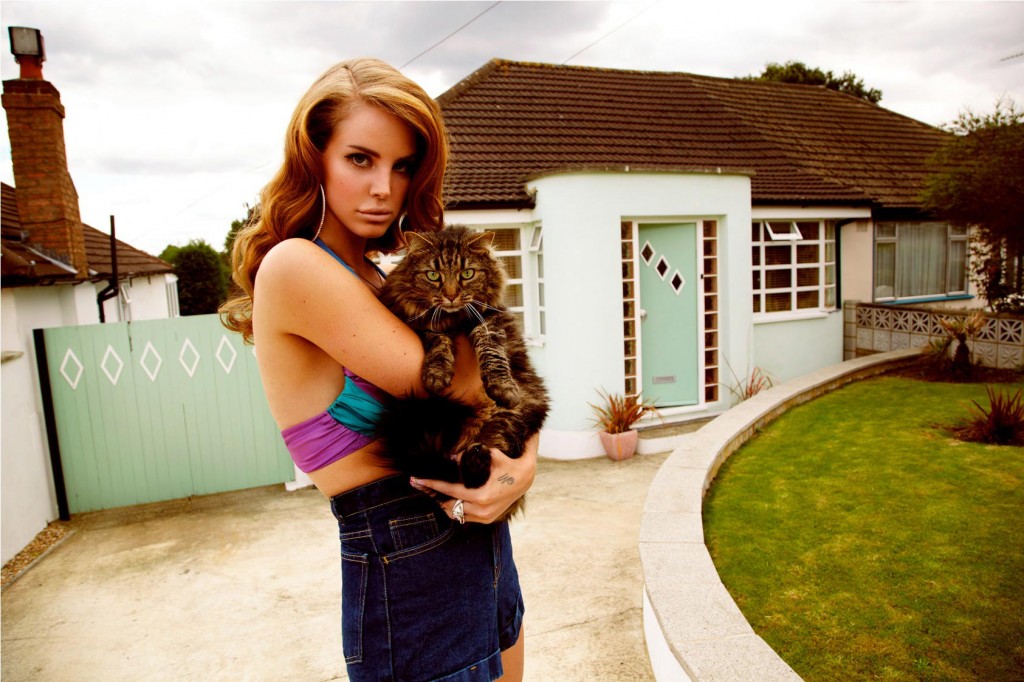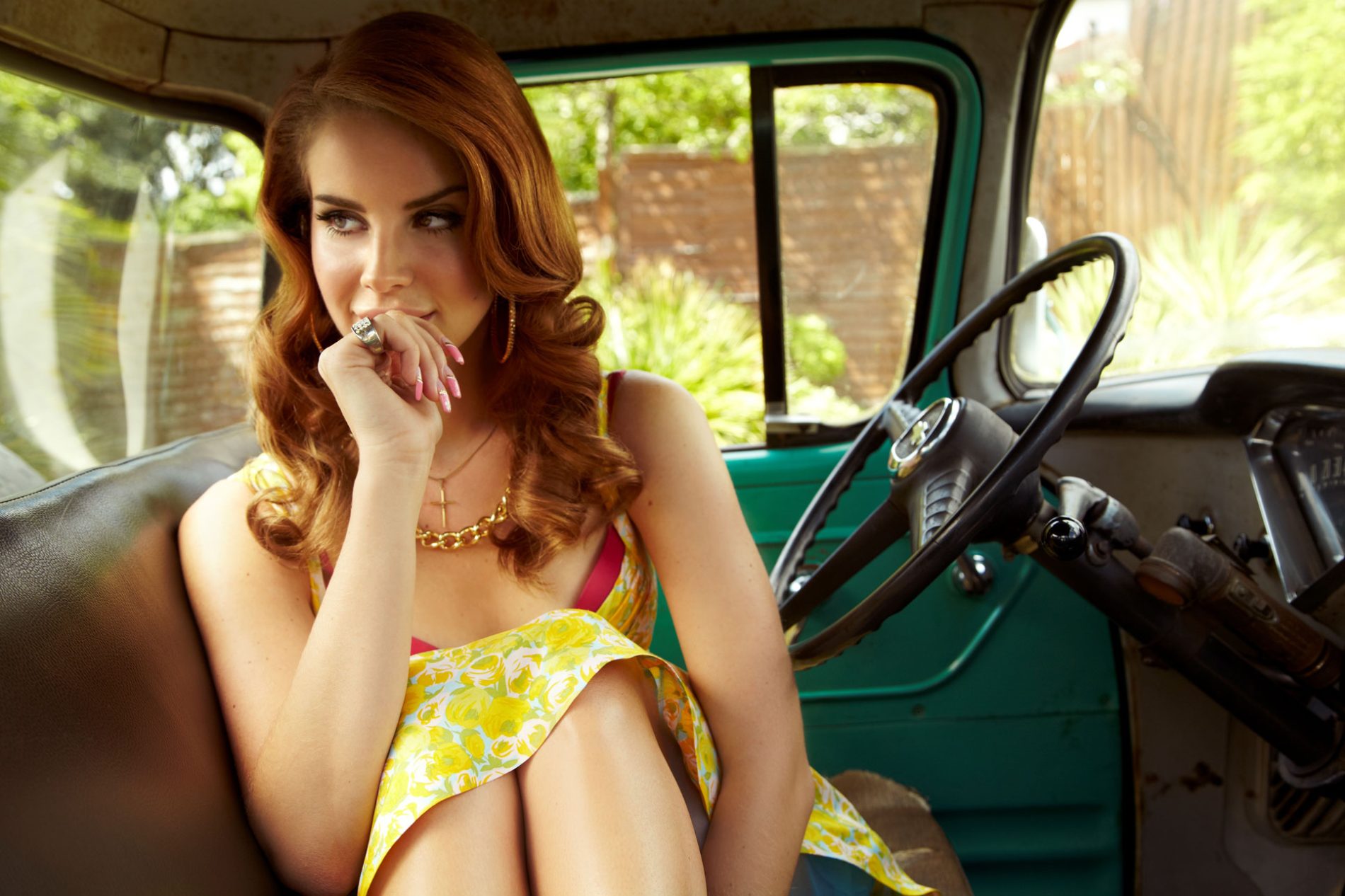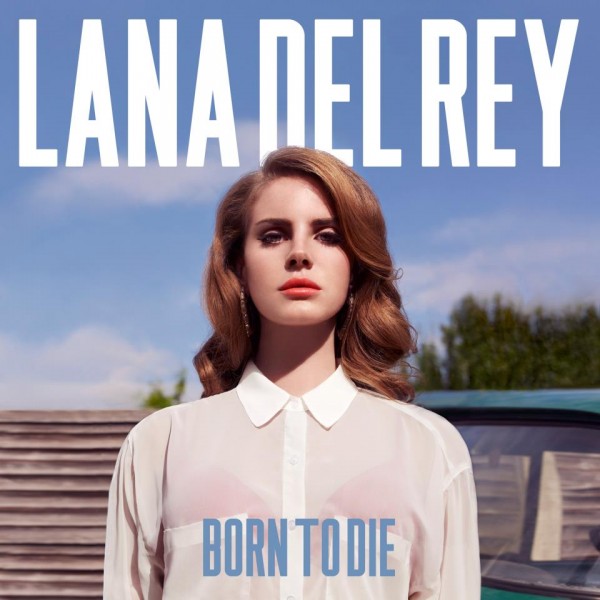THE SET UP: An Intro to Lana Del Rey & the Article “Pop Music, Social Development, and Neurology”
a piece primarily created to provide background for Lana Del Rey and context for our article on the pop star in relation to neurological and social development

[CLICK HERE to jump ahead to the main article, written by A. Jogger]
PLEASE NOTE…
This section is only intended to establish a reference point for those unfamiliar with Lana Del Rey and/or her background. It was initially created as a preface for the article: “Pop Music, Social Development, and Neurology; A Scientific Exploration of Lana Del Rey’s Rise and Fall (and Rise)” by A. Jogger, which delves more immediately into the subject and reflects on where she is now. This piece is centered more around where she came from. If you feel that you are already adequately versed on this subject matter, please feel free to click the above link, bypassing this introduction and advancing to the primary content directly.
Unless you’ve been living in a cave under a rock, it’s likely that you’ve read any number of strikingly unoriginal, cookie cutter-articles that lead off with the phrase, “Unless you’ve been living in a cave…” or “Unless you’ve been living under a rock…” before launching into some brief update regarding breakout indie pop vocalist Lana Del Rey. In fact, even back when I read the very first article that introduced me to the overnight sensation and vocalist behind the smash internet hit “Videogames“, I was already greeted with the implication that I had arrived embarrassingly late to the LDR party. Of course, the exaggerated content in the post was centered around the idea of a PR team conspiring to bamboozle the taste-makers and internet world by selling them a pop-star packaged under the guise of a self-made indie starlet. “WE’VE BEEN TRICKED! WE’VE BEEN DUPED! IT WAS A SETUP!” were the basic claims. I wasn’t paying much attention.
The next time that I came across Lana Del Rey was actually through the original airing of her, now infamous, performance on Saturday Night Live. She was in an evening gown and had the stage presence of a tranquilized ostrich. “Yikes,” I thought. “This is rough. I think that this might be that girl that I read about in that forgettable blog post.” At the time, her album hadn’t even been released and she was booked on the program based on little more than the strength of two singles that had already hit the internet. That appearance was, subsequently, hailed by many — including NBC nightly news’ Brian Willams — as one of the worst performances in the show’s 37 year history. The backlash spread, with LDR being panned on sites from SPIN.com to The Huffington Post. Reports came in that there had been a national tour in the works, but, in the wake of the the SNL fiasco, it was postponed indefinitely. Those claims were later denied.
I searched through her limited offering of videos at the time to discover a few things. First was that the studio version of miss LDR and the live incarnation can be quite different. Quality production insured that the transitions in her voice from Etta James soulstress to a deep Nico weren’t so drastic, abrupt, and jarring. In contrast, her live performance was like watching a film actor, who’s accustomed to working with the benefit of endless takes, fumble on broadway. There was nothing to edit and paste the transitions smoothly together. Aside from the steep fluctuating pitch of her vocals, there was plenty of bold contrast to her imagery, as well. Her videos were montages constructed from clips of old Hollywood and gangster-era/Rat Pack Las Vegas, with skateboarding footage and flashes of 2Pac mixed-in for good measure. The music can be orchestral, sultry and/or heavily tinged with a quintessential vintage production quality. Her song, “Blue Jeans” (also delivered questionably on SNL) just sounds like a follow up to Chris Isaak’s “Wicked Games“.

Lana is packaged like a 1940s Hollywood starlet doing cheesecake, with a Veronica Lake part/swoop at times, or an even more volumized coiffe to match her Ann Margret dye-job at others. When she’s not wearing gowns, she’s sporting something like a Lana Turner sweater, sometimes confusingly paired with a thick gold RUN DMC chain (Cuban links, son!). The lyrical content shifts from mentions of James Dean and hazy romantic desire to phrases like, “I was raised on hip hop“, “So fresh to death“, and “I’ma ride or die“. When her album, Born To Die did eventually hit the shelves, it even included the unfortunate track, “National Anthem” which features Del Rey blatantly venturing into more generic pop territories and toying with a rap cadence that yields the less than stellar results of a soccer mom wearing a sideways, adjustable Life is Good cap and trying to show her kids that she’s “still cool” and “down with the scene.” Still, the idea of pairing hip, youthful, and more current aspects of culture like video games, skateboarding, and rap music with the throwback aesthetic of Donna Reed, drag racing, pin ups, and Dean Martin proved to be marketing genius. Although the imagery is arguably conflicted, all of these elements transmuted into some sort of hipster vapor via methodical pop-marketing alchemy, wafting fumes of “legitimacy” and “Indie buzz” up the nasal passages of the blogoshphere and the hip urban dwelling youth who pride themselves on being cutting edge.
Hipster Runoff (best known for coining the genre term, “chill wave”) wallowed in the post SNL backlash. Never buying into the hype, they’d been taking shots at the artist and exposing the inconsistencies in her persona from the beginning — her industry name change (birthname: Lizzy Grant), her previous failed attempt as a more “mainstream” artist, the financial/industry support of her ridiculously successful domain investor/marketing wizard father, her new modeling career, her boarding school education, and so on. Each new piece of coverage sought to weaken any legitimacy of the self-proclaimed “gangsta Nancy Sinatra” as an independent, self-created, “artist” who once “lived in a trailer park”. They lampooned Del Rey mercilessly, eventually going as far as to give the site a temporary overhaul, transforming it into mock LDR superfan celebrity blog titled, “The Lana Del Report.” The default avatar for unregistered commenters became an animated gif of Del Rey blowing kisses toward the screen. They laughed openly as sites like Pitchfork, who once championed LDR early on, now aggressively back-peddelled, coldly flinging her torso under the bus and panning her album to salvage their own credibility as supposed taste-makers.
Lana Del Rey has become a fascinating subject of focus, primarily because she’s not that fascinating. She’s become so polarizing of a subject, because she really shouldn’t be. Any other pop star would have their typical dedicated fanbase, as well as the detractors who generally just detest the concepts of fame and popular music and would simply have rejected them out of their clear association to those worlds. The difference, this time, is that the corporate marketing machine hit the demographic of the young, anti-corp. hipsters who fancy themselves as part of the latter category, so on the money that, once they realized that there might be very little separating them from the former group, they had no other option but to attempt to distance themselves as hurriedly possible. People identify themselves by what they are NOT as often as, and possibly even more than, by what they ARE. The curtain had slipped off of the rings a bit, exposing a glimpse behind it, and questions were raised. The Pitchforks of the internet world were supposed to be the ones dictating the next big thing and dispensing indie buzz credentials, but they seemed to have inadvertently taken their cues and influence from a “corporate” marketing structure that they’ve built their name on being able to repel. What makes one marketing powerhouse less or more legitimate than the other? In the “virtual” world and the internet-age the lines are blurred. From a traffic and site analysis perspective, Pitchfork is actually crushing Spin.com in the area of popularity. Perhaps, more importantly is the question of what really makes Lizzy Grant any less authentic than the millions of other girls wearing 20th century period garb. When the “thrift” stores cost as much or more than the department stores, what does that mean? When “indie” acts are selling out theaters and winning Grammys, at what point do they become mainstream? Are you closer to what you judge than you originally thought or want to believe? Is it time to reevaluate your own identities and/or look to a new direction for self worth and value that doesn’t rely on comparisons to others?
Despite the efforts of so many supporters-turned-harpoonist to snuff out the Del Rey flame that they helped to fan, Born to Die only took about 1 month to sell $1-million copies and reached #1 in 11 countries (top 5 in just as many others). As we in the states continued to talk shit about her poor SNL performance, Del Rey was picking up both a Brit Award (“International Breakthrough Act“) and a Q Award (“Next Big Thing“) in the UK.
 Last week, it was announced that Lana Del Rey would be doing an in-store performance at Easy Street records here in Seattle. I was surprised. Generally, when an act does an in-store, it’s because they already have a show booked in town somewhere that evening. She didn’t. In fact, the only other shows scheduled for her at all were a handful that are spread across Europe and Norway throughout the rest of the year. There would be an autograph signing for the in-store, as well, but you’d need to purchase her album to get the wristband that would allow you to attend it. Eventually, I decided to go for 3 reasons. The first was to get some photographs — possibly, to send to Spin magazine so that they could tell me that they were “great” again and then not wind up paying me or using them. The second was because I had figured that there’d likely be a good story in there for an article that I could post for you goons — maybe she would have a meltdown, or I could write about being a creepy man in his thirties surrounded by tweens. The last reason was the most important, being a hoodlum and a scavenger by nature, I had checked to see how much her autographs were going for on ebay. The prices were ridiculous and I have a baby to provide for. I even bought the album — an album that I already know that I didn’t want — to make sure that I wouldn’t back out of going.
Last week, it was announced that Lana Del Rey would be doing an in-store performance at Easy Street records here in Seattle. I was surprised. Generally, when an act does an in-store, it’s because they already have a show booked in town somewhere that evening. She didn’t. In fact, the only other shows scheduled for her at all were a handful that are spread across Europe and Norway throughout the rest of the year. There would be an autograph signing for the in-store, as well, but you’d need to purchase her album to get the wristband that would allow you to attend it. Eventually, I decided to go for 3 reasons. The first was to get some photographs — possibly, to send to Spin magazine so that they could tell me that they were “great” again and then not wind up paying me or using them. The second was because I had figured that there’d likely be a good story in there for an article that I could post for you goons — maybe she would have a meltdown, or I could write about being a creepy man in his thirties surrounded by tweens. The last reason was the most important, being a hoodlum and a scavenger by nature, I had checked to see how much her autographs were going for on ebay. The prices were ridiculous and I have a baby to provide for. I even bought the album — an album that I already know that I didn’t want — to make sure that I wouldn’t back out of going.
I went. I stood close enough to be in a crowd and sweat in the jacket that I should have left in the car. I decided to half-ass interview the 2 guys next to me, while I waited. They were friends. One was cynical, never fully embracing the idea that he was a fan, explaining that he thought she would fumble and maybe drop the ball mid-performance. Still, he subtly defended her by saying that he believed that the in-store environment was a bold move to enter into and that it was more vulnerable than a huge arena — not something that I agree with (the place was almost entirely made up of adamant supporters). He was a little too jaded, a little too cocky, and came off like somewhat of a know-it-all dick. He was a little too much like me. His friend was older than him. He had just purchased the Born to Die vinyl. He had simply heard some songs and liked the album, so he picked it up and wanted to see her live. Simple reasoning. I’d heard the first guy telling this guy about how he had made the right choice with the vinyl, because he could get Lana to sign it and then he could frame it for his wall — something that he probably secretly wanted to do himself, but it wasn’t worth losing his vantage point as a cynic. I’m sure that he was happy to have his enthusiastic friend there as an excuse for him to also be attending. The guy with the record actually wound up talking to me about Minor Threat and Fishbone. He was probably more genuine than either of us.
The performance happened. That’s about all that I can say about it; it occurred. I hadn’t eaten all day, was spacey, tired, and didn’t even try to work my way any further into the crowd. I couldn’t catch a photograph to save my life. STRIKE 1! I got in line to have her sign my shit, but it took forever. Eventually I had to weigh the price of a parking ticket against the price of an ebay sale. I chose to bounce empty handed. STRIKE 2! I didn’t have a story, either. Lana’s handlers had been fervently instructing everyone not to try and take pictures with the star or give her hugs. There were time restrictions and she needed to fly out immediately after the signing. When I was leaving, I noticed that Del Rey was the one that was hugging everyone and delaying everything, not the fans. She didn’t even seem like a “bitch.” So, was the real story that she’s just some girl that’s excited about being a pop star; maybe even someone who would have been happy to be marketed as a pop star from the beginning, but just has trouble staying in the character created for her? Who knows? It’s not a story that I felt was interesting enough to waste my time and energy on writing. Was it also that most of her fans just wanted to have a good time and that some of them aren’t even as one dimensional as some of her detractors? Maybe the story was that this chick can’t not land on her feet. I did inadvertently contribute to those album sales after all, even though I’ve got a receipt and a return in my near future (I fucking bought two of them for chrissakes!). Now she’s even finally gotten us to write about her (2 separate articles no less!). The old foreign hag in her 50s – 60s trying to convince me that I was cutting in front of her in the autograph line wasn’t enough to carry an entire post. This record store appearance was the modern day indie equivalent of a Tiffany mall concert. But, like I said: no real story, which means… STRIKE 3!
I came home and posted on facebook about how uneventful the day was. No photos, no autograph, no story, etc. It was over for me. I was defeated by bubblegum, tweens with flower crowns and, most importantly, myself. By the next evening I got an email from my friend A. Jogger, who I wasn’t even aware had attended the appearance. Attached was an article that begins with the in-store and then ventures into the much more interesting direction of hypothesizing about where neurological development and pop-music intersect. Unlike anything that I had to go with, it’s actually genuinely interesting and worth reading. This post that you’re currently reading was only intended to provide a set-up and backdrop for Lana Del Rey, as a subject explored in Jogger’s contribution. Unfortunately, it can be difficult for me to stop once I start writing and this “intro” just keeps fucking going. Plus, it’s hard to know which information is important, considering that there’s already an ongoing debate about whether Del Rey even carries any real importance or not and where that lies. At any rate, Jogger’s “Pop Music, Social Development, and Neurology; A Scientific Exploration of Lana Del Ray’s Rise and Fall (and Rise)” is a really solid and fascinating piece, which adds a welcomed dimension to Monster Fresh. I’m happy to be able to post it.